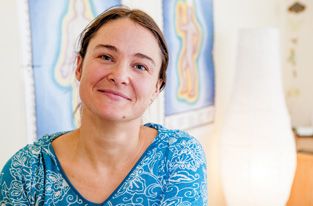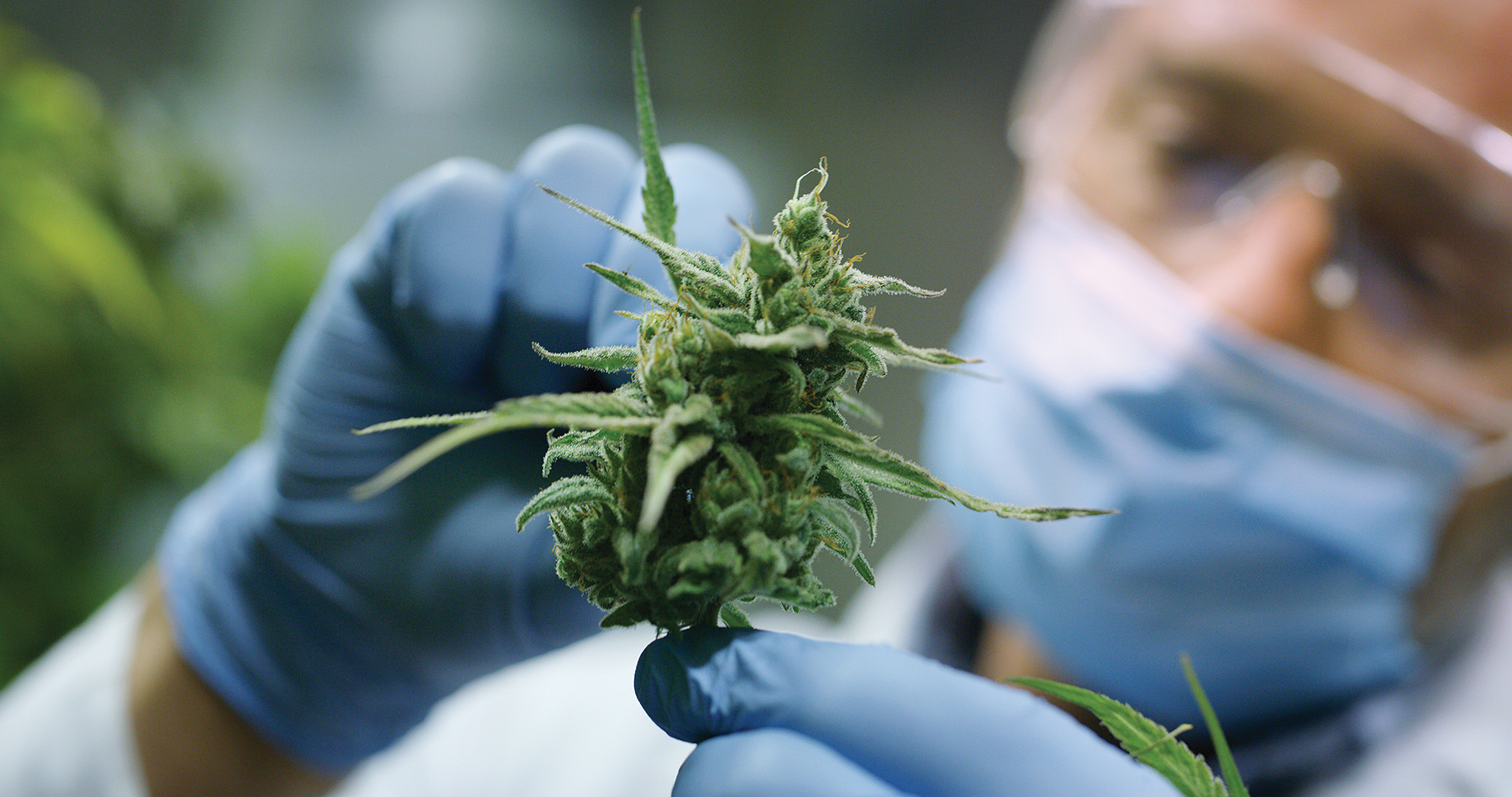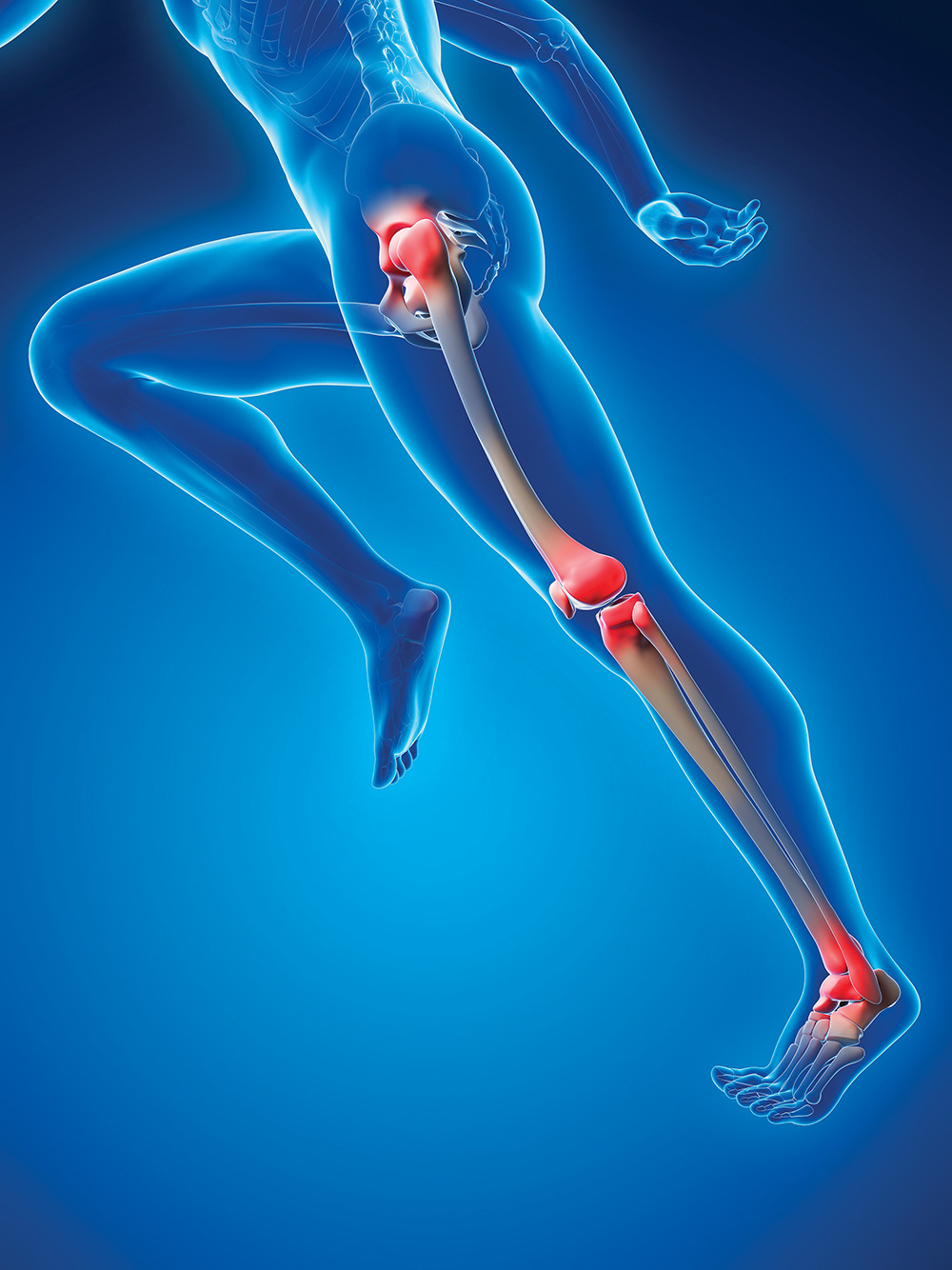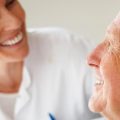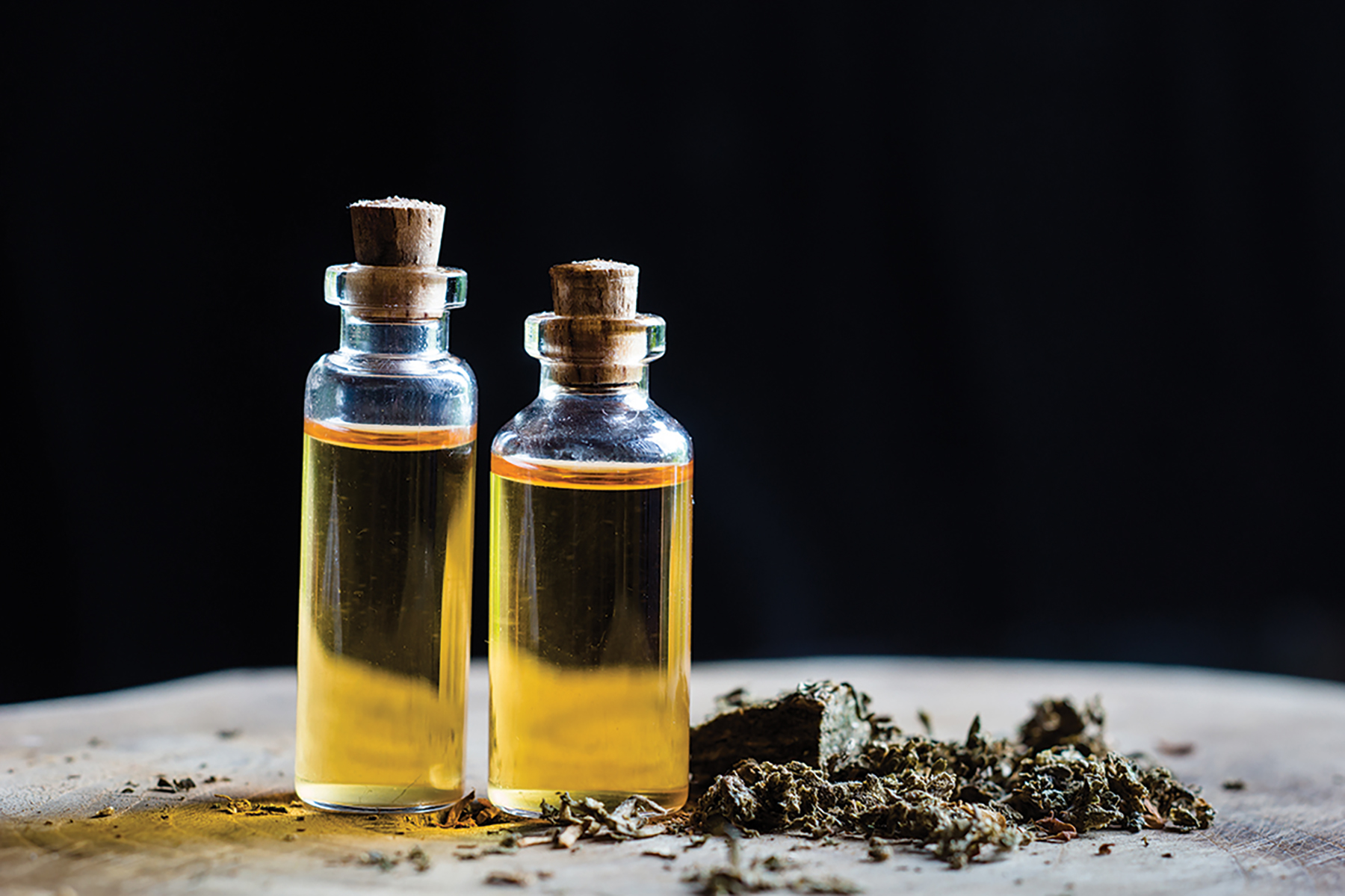Complementary approaches and traditional medicine team up to fight chronic pain
![]() he first time James Plummer walked through the doors of Blue Mountain Acupuncture Clinic he was using a walker. Five blown discs, two spinal column twists and severe arthritis led to desperation for 59-year-old Plummer. That was two years ago. Today Plummer still needs to take it easy, but he no longer needs his wheelchair or his walker. “I tried everything,” he recalls. “I was seeing a back specialist in London, one of the top specialists in Ontario, and he couldn’t do anything for me.” Plummer’s pain comes from a lifetime of sports injuries, farming and working construction. Surgery isn’t an option. “My doctor gave me a 10 per cent chance of walking again after surgery,” he says. “It’s not an option until the pain gets too severe.” Plummer is realistic and knows he will always live with pain, but now he is also optimistic that acupuncture can keep the pain at bay, keep him mobile and keep him off the operating table. “Corinna can manage the pain,” Plummer says of Corinna McFarlane of Blue Mountain Acupuncture. “She gives me hope when no one else can help.” Unfortunately, Plummer’s story is not unique. According to the Canadian Pain Society, one in five Canadians, – roughly six million people, – is living with chronic pain; pain that lasts longer than three to six months. That figure is expected to rise to one in three as our population ages over the next two decades. Chronic or persistent pain can result from trauma or illness or for no obvious reason at all. It is a complex, poorly understood problem which can affect musculoskeletal, neurological, gastrointestinal, gynecologic, urological and psychological body systems. It can decrease mobility, interrupt sleep and result in decreased energy, impairing work, recreational pursuits and relationships, and often leading to anxiety and depression.
he first time James Plummer walked through the doors of Blue Mountain Acupuncture Clinic he was using a walker. Five blown discs, two spinal column twists and severe arthritis led to desperation for 59-year-old Plummer. That was two years ago. Today Plummer still needs to take it easy, but he no longer needs his wheelchair or his walker. “I tried everything,” he recalls. “I was seeing a back specialist in London, one of the top specialists in Ontario, and he couldn’t do anything for me.” Plummer’s pain comes from a lifetime of sports injuries, farming and working construction. Surgery isn’t an option. “My doctor gave me a 10 per cent chance of walking again after surgery,” he says. “It’s not an option until the pain gets too severe.” Plummer is realistic and knows he will always live with pain, but now he is also optimistic that acupuncture can keep the pain at bay, keep him mobile and keep him off the operating table. “Corinna can manage the pain,” Plummer says of Corinna McFarlane of Blue Mountain Acupuncture. “She gives me hope when no one else can help.” Unfortunately, Plummer’s story is not unique. According to the Canadian Pain Society, one in five Canadians, – roughly six million people, – is living with chronic pain; pain that lasts longer than three to six months. That figure is expected to rise to one in three as our population ages over the next two decades. Chronic or persistent pain can result from trauma or illness or for no obvious reason at all. It is a complex, poorly understood problem which can affect musculoskeletal, neurological, gastrointestinal, gynecologic, urological and psychological body systems. It can decrease mobility, interrupt sleep and result in decreased energy, impairing work, recreational pursuits and relationships, and often leading to anxiety and depression.
As chronic or persistent pain gains more attention in the medical field, it is increasingly recognized that the successful management of chronic pain requires an integrated multidisciplinary team approach, what is referred to as Complementary and Alternative Medicine, or CAM. CAM includes, but is not limited to, acupuncture, chiropractic, massage, yoga, osteopathy, nutrition, psychotherapy and many sub-disciplines within these. When Corinna McFarlane and Jeff McMackin first came to Collingwood in 2004, not many people knew what traditional Chinese acupuncture was. Acupuncture treats patients by inserting and manipulating thin, solid needles into acupuncture points in the skin. According to traditional Chinese medicine, stimulating these points corrects imbalances in the flow of energy through the body’s 20 meridians which connect over 400 acupuncture points. Three years after moving to Collingwood, McFarlane and McMackin opened the doors of the Blue Mountain Acupuncture Clinic and have since seen over 2,000 patients and taken referrals from 16 physicians (they receive one to two referrals a week from doctors, sometimes from as far away as Owen Sound and Orillia). Increasingly, Western and Eastern practices are coming together to solve problems that can’t be solved independently of one another.
“We’re a team now, with physicians,” says McMackin. “This interdisciplinary approach is working.” Pain is subjective and can be hard to measure and identify. Working as a team means fewer patients slip through the cracks, says McMackin. An interdisciplinary approach means more eyes and different perspectives are looking at a problem. “For our tradition to gain respect, we have to work with physicians and work within the comfort boundaries of the patient,” says McMackin. “There is a strong place for Western medicine. We believe in it but we also believe in integrative medicine.” Complementary practitioners can rely on physicians for procedures like diagnostic testing and screening to help rule out certain causes. And physicians can rely on complementary practitioners to keep patients off the operating table and away from often harmful or addictive narcotics. “The family docs in this area are fabulous,” says Dr. John Bowman of Collingwood Sports Medicine and Rehabilitation Centre. “They are competent and caring, and this is very important and something we can’t forget.” In 1999, after 27 years of practice as a family doctor in Cambridge, Dr. Bowman decided to specialize and took over a Collingwood sports medicine clinic.
“My approach is more of a traditional one,” says Bowman, who specializes in sports medicine. “But the great advantage in our clinic is we have therapists who specialize in other areas.” The centre offers chiropractic care, massage therapy and acupuncture, among other services. “I know what I know, but I can also rely on the skills of the other therapists,” says Bowman. “There is a lot of interaction back and forth. I can say ‘here’s what I’m seeing, let me know what you find and how you would approach this.'” Team environments for doctors are becoming commonplace. Medical schools emphasize a team approach, and the Ministry of Health is moving in the direction of health teams and away from individual practices, as is the case with the Georgian Bay Family Health Team. “Younger family practitioners seem to be more open,” says Bowman. “The younger generation of doctors are very used to working in teams and are more comfortable referring to other specialties.” Bowman still relies on more traditional methods and believes there will always be a place for them, like prescribing anti-inflammatories and narcotics. “The process of inflammation is a chemical cascade leading to pain,” says Bowman. “Anti-inflammation is a mainstay to relieve pain. Tylenol is very effective and narcotics are very important. There is a role for medication, but people are often cynical. It isn’t the only thing; it’s just one of the parts.” Medications are one of the most common ways to treat and manage pain, but long-term use is increasingly being questioned. The use of narcotics usually provides only temporary relief, their effectiveness can wear off, they are expensive and there is risk of addiction. Surgery is something that can’t always be avoided, but Bowman stresses the importance of seeking alternatives first. “From a patient’s perspective it is a mistake to turn your back on traditional medicine,” he says. “It is important to look at the whole integrative approach to make sure you have covered all your bases.” And this means keeping your GP in the loop, says Bowman.
S ix-and-a-half years ago, Mary-Lyn Waye felt numbness and tingling in her left arm. A lack of space between her collarbone and her shoulder was causing pinched nerves. After three surgeries she was left with chronic pain, and doctors told her there was nothing else they could do. Through a pain clinic in Barrie she was prescribed a series of narcotics; 10 in total. An active mountain biker, skier, and snowmobiler, she gave up all of the activities she loved. “My shoulder would catch every time I moved,” recalls Waye. “It was such sharp pain; deep down pain.” A friend showed her an article in a local newspaper about the Graston technique offered by Dr. Jennifer Fawcett of McNabb Health Centre in Stayner and Collingwood. “I kind of brushed it off,” says Waye. “I didn’t want to do anything else and I couldn’t see how chiropractic could work.” When government cutbacks closed the pain clinic in Barrie, Waye lost the only source of medical support she had. Her pain had moved to her right arm, so she called Fawcett. Although now a mainstream option, chiropractic is still considered by many as a form of CAM. The main focus for chiropractors is the spine, and most chiropractic visits involve adjustments to realign the body, promoting healing. Fawcett offers the same hands-on service as other chiropractors, but her passion is soft tissue therapy.
After an injury or surgery, the body builds up tough, fibrous tissue as a protective mechanism around the injury. This tissue isn’t as strong or mobile as healthy tissue, and leads to limited range of motion and chronic pain. “It looks like I’m a medieval scary lady,” says Fawcett, showing off her six stainless steel Graston instruments. “I’m not doing some crazy voodoo; it is a very effective treatment and a huge complement to what I do.” As Fawcett runs her steel tools over a patient’s scar tissue, she can detect problem areas and begin the process of breaking up the scar tissue and promoting tissue growth. “There is a grinding, gristly feeling when I come across the scar tissue,” explains Fawcett. “I can feel it and so can my patients, which builds confidence. They can feel the tissue changing. They can feel how we’ve worked to break up the tissue that has been limiting them.” Waye visits Fawcett twice a week. “If I don’t make it I can feel the difference and it starts to tighten up again. Graston keeps the pain at bay,” she says. “I would have been in to see the surgeon by now, and that terrifies me.” Waye still takes one painkiller three times a day, but she has weaned herself off the others. Prior to seeing Fawcett, Waye’s doctors had been increasing her dosage of pain meds every month because the meds weren’t working or they were wearing off too quickly. Waye hasn’t had to increase her dosage since she began seeing Fawcett, nine months ago. “My doctors are very skeptical,” admits Waye. “They don’t know how it’s working, but it is working for me so I’m going to keep going.” Although her coverage has run out, Waye says it’s worth the cost; she has booked further appointments months in advance. “I am often the last resort because meds aren’t working,” says Fawcett. “If my technique isn’t working I will find someone who can help. It’s important to know you live in a community with a variety of options; no one therapy will work for everyone. I have a pretty good track record, but I may not be able to help someone all the way. I think that’s key – you have to be open to other practices; they all have benefits to patients.” There is a lot of crossover among many disciplines offering ultrasound, hydrotherapy, laser therapy, electric stimulation, chiropractic, acupuncture, and naturopathic medicine.
“One of the best benefits of seeing a N.D. is that we have so many tools in our tool belt,” says Kendra Smith, a naturopathic doctor and the newest face at Stone Tree Naturopathic Clinic in Collingwood. “The most important piece of the puzzle is finding the root cause of the pain.” For Smith this often comes down to diet. Diet can contribute to all sorts of chronic pain, but especially abdominal pain, migraines and chronic headaches, painful periods, and inflammatory conditions such as rheumatoid arthritis. In-depth assessments including blood work, food allergy testing and diet analysis all help Smith get to the root of the problem. “In cases of rheumatoid arthritis we’ve found a huge link with gluten and dairy,” says Smith.
Other inflammatory foods include sugar, red meat, corn, eggs, alcohol and processed food. Nutrition is one of the most important aspects of health because we rely on it daily to thrive. And it can be surprising where dietary deficiencies manifest pain. “For example, discovering a lack of Omega 3 through blood work means knee pain could come from a lack of lubrication in the joints,” says Smith. Treatment could include IV nutrient vitamin therapy or botanical and vitamin supplements. “This is a big one for us,” says Smith of IV therapy and supplements, both highly effective methods of absorbing vitamins and nutrients, helping to repair and nourish the cause of imbalance. “Turmeric is great, but it’s hard to take two heaping tablespoons of it every day and you would have to take it with oil to absorb it,” says Smith. “A lot of people say ‘no way, just give me the supplement.'” Elimination diets help determine which foods are causing flare-ups and introducing foods to your diet, like walnuts and salmon (great sources of Omega 3s) or tart cherries (anti-inflammatory) can assist in healing. A shift in diet can eliminate pain or take you one step closer to solving the mystery of your pain. Often diet is part of a package that includes other treatments.
For John Marsden, of the Marsden Wellness Clinic in Collingwood, osteopathy can be part of this package, along with exercise, stretching and rest. Marsden is the only trained osteopath working in this area (one of 160 trained in Ontario) and a good part of his week is spent treating people with pain. Osteopathy is a manipulative therapy working the body’s structure (skeleton, muscles, ligaments and connective tissue) to relieve pain, increase mobility and restore health. For osteopaths, our body structure, organs, mind and emotions are interrelated and mutually interdependent. In his practice, Marsden relies on a myriad of techniques to treat his patients and, like so many integrative practitioners, he starts with the source, not the symptom.
Forty per cent of the people who walk through his door suffer from lower back pain. “But it’s not just lower back problems causing the pain,” says Marsden. “We find the source of the problem and that’s what we treat. There is a lot of detective work, to find out where the problem originates from. This is why I enjoy this practice and find it so intriguing.” As a youth you may have been active and incurred a minor injury that led to problems turning up later on, explains Marsden. Throughout the next 10 to 15 years the body compensates for the injured area, causing problems elsewhere. But the body can only compensate for so long. “Lower back pain can come from an old ankle injury. You had a walking cast, used crutches, and did everything you were supposed to do – except the tissue wasn’t treated. Then your back spontaneously goes out on you when you bend over to pick up a sock. It’s all connected,” says Marsden. In a case like this, Marsden begins treatment not with the back but with the ankle, and works his way up. It might take three or four treatments to heal, or it may take more or fewer treatments. Every case is unique. “As a general rule, more treatment is required the longer the problem has been around,” says Marsden. “There are layers and layers of protective tissue to undo before we get to the problem.” Similarly, internal problems can result from imbalance in the body’s structure, says Marsden. For example, lower back pain on the right side may come from issues with the small intestine and digestion. How the small intestine is moving can affect the structure of the lower back. “There is a lot of education during treatment,” says Marsden. “We talk of other issues that may or may not be relevant to why they’re here.”
Sometimes the best medicine is listening to what people have to say. Visits with complementary practitioners are usually longer than the 15-minute allotments with GPs. Having the opportunity to explain your narrative is a big component of the healing process. It is also important for patients to have a clear understanding of what might be causing their pain, taking away some of the mystery and clarifying what therapists can and cannot do to treat it. Patients also need to understand what they can do to help themselves. This is a common thread among complementary practitioners: recognizing the responsibility of the patient in their own wellbeing. “More than ever we understand we are responsible for our own health,” says Juliette Reynolds, a Thai massage therapist. “This is a huge shift in health. Most people are very aware that they have to make the change.” Reynolds has been practising since 1993. Much of her instruction took place in Thailand with a Buddhist nun and with monks along the Thai/Burma border. “This is not just a luxury; it is preventative health, a necessity,” she says. “You have to invest in your body at this level. Deep relaxation and meditation, this is when the body heals.” In Reynolds’ Creemore studio, clients lie fully clothed on a heated mat while soft music plays in the background and medicinal Thai herbs scent the air.
Reynolds uses her whole body, including feet, legs and elbows, to massage her clients. Herbs wrapped in cheesecloth and warmed in a steamer are massaged into the muscle, softening, stretching and elongating them back to their natural length. Reynolds works through different breathing techniques as she moves her client’s body, pressing acupressure points and working along energy lines. Her therapy promotes circulation, gives a lymphatic boost and opens the joints. “The body wants to be healthy,” says Reynolds. “In Thai massage there is the belief that sickness can come from bad energy, like bad thoughts.” A patient’s attitude and beliefs play a big role in recovery. A mountain of pain research illustrates how catastrophizing can cause the release of inflammatory chemicals in the body and have a negative influence on the immune system. “I can detect where there are energy blocks,” says Reynolds. “Sometimes I’m working on someone and I touch one spot and there are floods of tears; it is all stored there. It’s about realizing how very connected we are. We are cleansing toxins and emotions.” Three days after a treatment, patients can have a full emotional meltdown, says Reynolds. “You have to have a really deep trust in the intelligence of the body, and an understanding that our bodies have a consciousness. Once that piece is realized, we see the shift. It never ceases to amaze me, the body’s ability to recover.”
Integrative medicine is not always a quick fix. It takes a long time for the body to become imbalanced and it takes equally long, if not longer, to bring that balance back. Joanne Pineau has been a travelling rural yoga teacher for 13 years. Last year she moved to Thornbury, where she offers general gentle yoga classes, and more specifically, yoga classes for lower back pain. Pineau believes healing involves changing our mindset. Yoga builds confidence, stamina and strength in gentle ways, and if you are willing it can challenge your perception of your body. When experiencing chronic pain, the nervous system becomes wound up or hypersensitive, says Pineau. An injury can lead to fear and the need to protect the injury long after it has healed, causing stress. “It’s like your nervous system is on high alert,” says Pineau. “It’s like an electrical panel where the demand has exceeded its capacity: it has short circuited; there’s a power drain.” Pineau uses the example of a shoulder injury where the tissue has healed but if someone were to put a hand on your shoulder you may retreat, because your nervous system is super sensitive. “You need to start challenging what you believe, that this action won’t cause any harm. You’re not denying the pain, but more like challenging your own thoughts,” says Pineau. “This is real for people; it is real pain. It can be hard for people to explain.” Pain is invisible, and people who suffer from chronic pain often feel misunderstood or alone, leading to anxiety. When the nervous system gets worked up, we forget how to breathe properly. “If you think of pain, breathing is very shallow and the abdominal is hyper-contracted,” says Pineau. “The abdominals need to be softened, and breathing can bring us back to our natural state.”
Deep belly breathing is the quickest way to start relaxing the body. It sends a signal to the nervous system, through the vagus nerve in the digestive tract, that everything is alright. Make the exhale longer than the inhale, says Pineau. Deborah Mobbs began attending Pineau’s classes four months ago. “I had two knees replaced in 2010 and one knee never felt normal after that,” says Mobbs. “I tried physio after the operation and it made the knee the way the doctors wanted to see it but my range of motion was limited and I was in pain after walking.” In 2011 Mobbs hurt her back as a result of favouring her painful knee. She began self-medicating her pain with over-the-counter painkillers. It is often easier to pop a pill and continue on with our day rather than dealing with the pain head-on. But relief is temporary. “My body just didn’t feel natural to me,” says Mobbs. Yoga taught her how to stretch in a way she hadn’t been before, and forced her to relax. “Yoga has brought my body back together again.” Pineau says many people don’t understand the nature of their pain, and this feeling of something just not being right is common. “Yoga helps us in reconnecting all aspects of ourselves,” says Pineau. “That’s what’s so great about it: it re-establishes a healthy relationship with the body. We become comfortable and safer in our body again.”
Complementary therapies tend to fall into four categories; movement-based therapies (physiotherapy, yoga, Pilates, tai chi), mind-body medicine (acupuncture, relaxation, meditation, Reiki), physical manipulation (chiropractic, osteopathy, massage) and lifestyle change. One technique may work for you or, more likely, a combination of therapies in addition to support from your GP. Whatever the solution, the reality is that chronic pain affects us all, either personally or someone close to us. We are an active – and aging – population, and whether we suffer from pain due to a build-up of scar tissue from a long-ago ski accident, pain from golfer’s elbow, or inflammation from arthritis, there are a myriad of complementary therapies available to us in Southern Georgian Bay. For thousands of years the world’s populations have relied on these techniques. Thankfully these ancient skills are regaining popularity and are practised by local individuals who have devoted years of their life to training and understanding how to help people in complementary ways.
By finding the right complementary therapies and approaches, and combining them with the best that traditional medicine has to offer, chronic pain sufferers can finally find some relief and start enjoying life again.![]()






